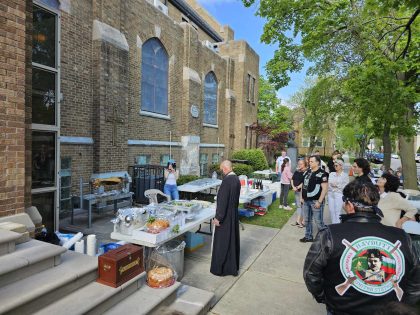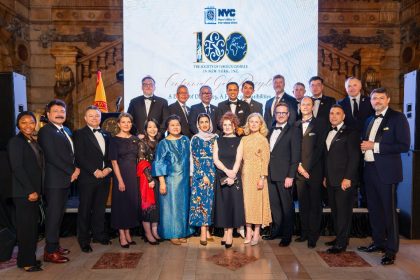On the first day of March Bulgarians put the „martenitsa“-s on their clothes or wrists and wish each other health and happiness with the words „Happy Grandma Marta!“ (from the Bulgarian word for „March“ – „mart“)
Martenitsa (Bulgarian: мартеница) is a small piece of adornment, made of white and red yarn and worn from March 1 until around the end of March (or the first time an individual sees a stork, swallow, or budding tree). The name of the holiday is Baba Marta. „Baba“ (баба) is the Bulgarian word for „grandmother“ and Mart (март) is the Bulgarian word for the month of March. Baba Marta is a Bulgarian tradition related to welcoming the upcoming spring. The month of March, according to Bulgarian folklore, marks the beginning of springtime. Early in the morning women must sweep the house and hang on the balcony a red cloth, so that Grandma Marta smiled and the Sun shined! This is an ancient Bulgarian tradition (existing, perhaps, for more than one thousand years) ,which symbolizes the end of Winter and the coming of Spring…
Baba Marta is seen as an old lady who has very contrasting moods. This is related to the weather during the month of March, which is traditionally extremely variable in Bulgaria – warm and sunny weather means that Baba Marta is happy; when she is angry, the winter frost returns. The majority of the customs connected to Baba Marta aim to make her happy and so bring about spring all the faster.

On the first day of March and for a few days afterwards, Bulgarians exchange and wear white and red tassels or small dolls called „Пижо и Пенда“ (Pizho and Penda).
The red and white woven threads symbolize the wish for good health. They are the heralds of the coming of spring in Bulgaria and life in general. While white as a color symbolizes purity, red is a symbol of life and passion, thus some ethnologists have proposed that, in its very origins, the custom might have reminded people of the constant cycle of life and death, the balance of good and evil, and of the sorrow and happiness in human life.
Bulgarians give martenitsi to their family, friends and neighbours. This may be in the form of a simple bracelet of entwined red and white wool or a brooch of red and white wool tassels. Front doors are decorated with enormous red and white pompoms or with „Pizho and Penda“. Pizho is the male doll and is usually crafted from white wool. Penda is the female, red doll and is distinguished by her skirt. Animals are also adorned with their own special martenitsa. Young people, in particular, can be seen with a wrist full of red and white bracelets.
Bulgarian Martenitsa Adorn Trees around World
Martenitza trees – decorating tree around the world to promote the unique tradition of celebrating 1-st of March.







